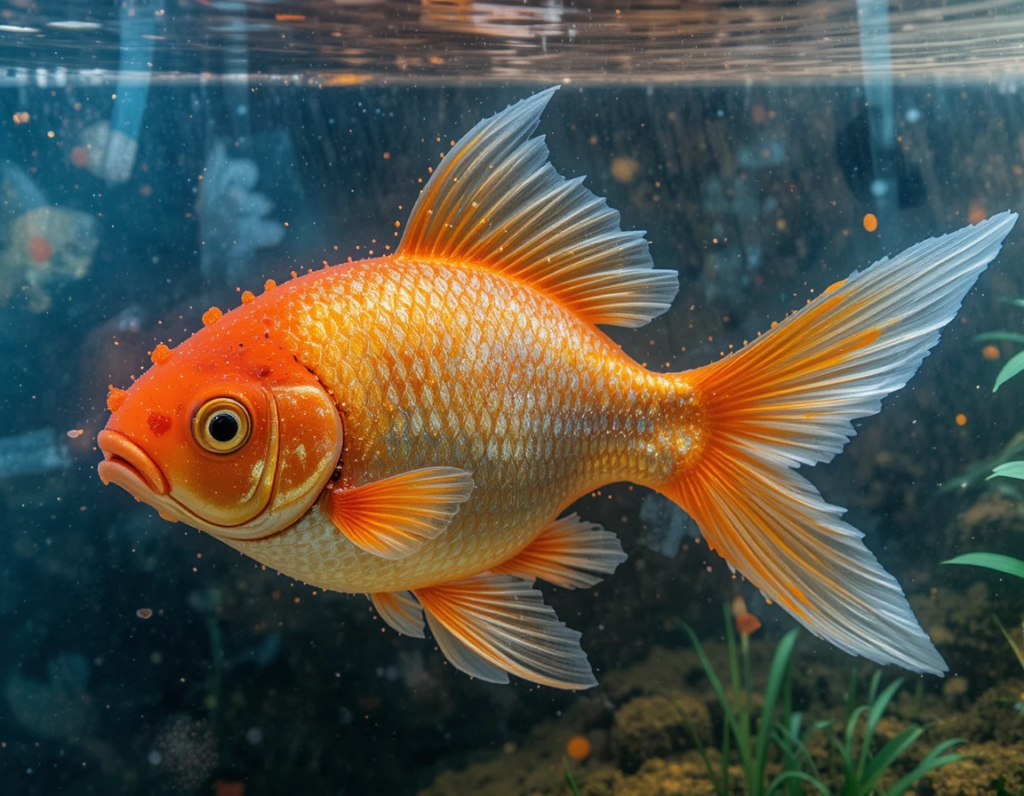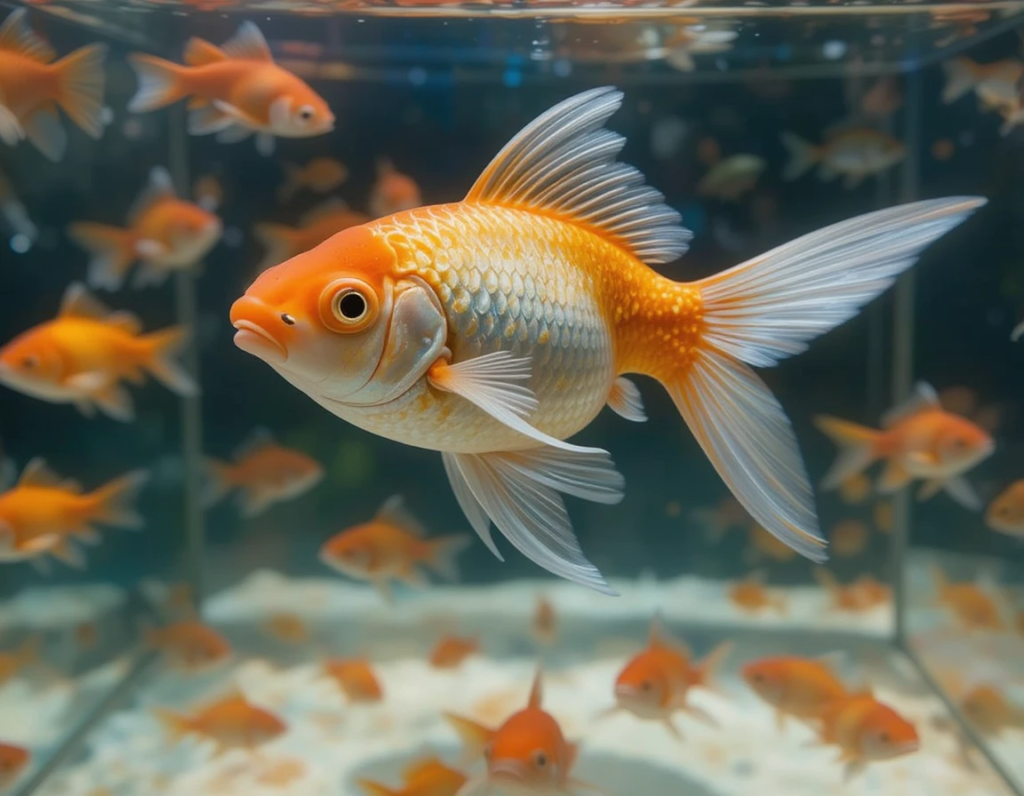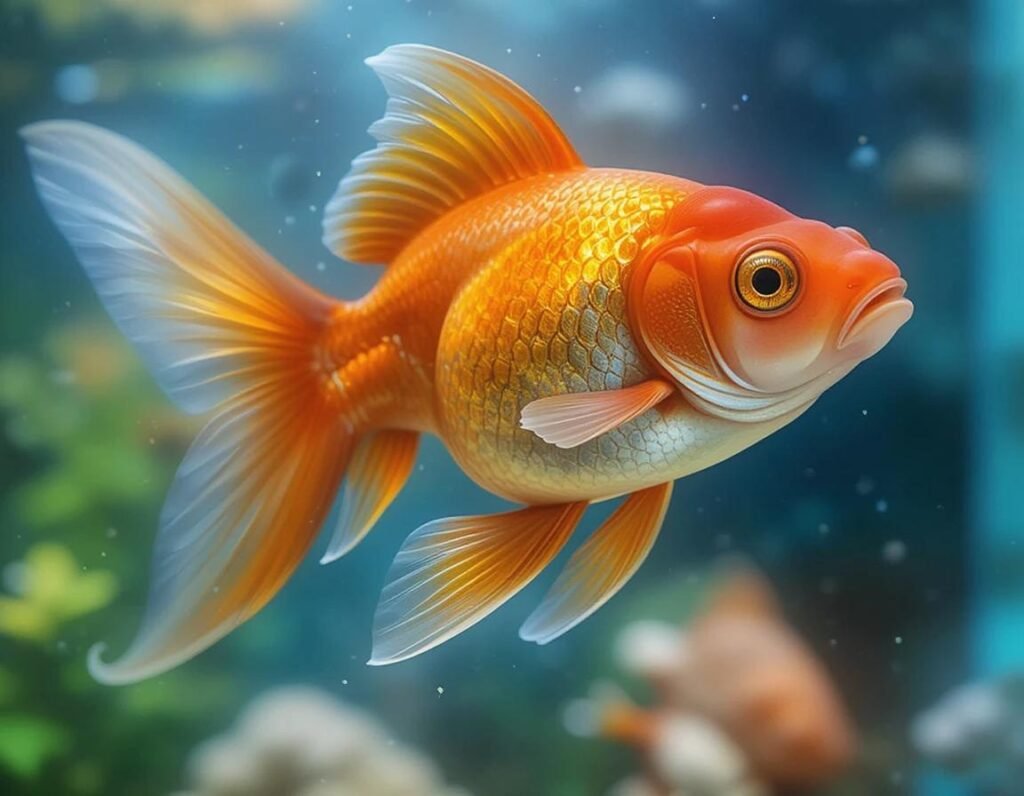
Bringing a new goldfish into your tank can be an exciting experience, but before you introduce your shiny new friend to the rest of the crew, there’s a very important step that many fish owners overlook: the quarantine process. It’s like the goldfish version of a “get to know you” period before they get to party with the other fish. Let’s dive into why it’s necessary, how to do it, and some tips to make the process as smooth as possible for your new finned friend.
Why Quarantine a Goldfish?
Imagine you’re moving into a new house, but you’ve never seen the place before. You’d probably want to check for things like leaks, pests, or maybe an overzealous neighbor. Well, goldfish feel the same way. When you add a new fish to your tank, there’s always the chance that it could bring along hidden health issues, like parasites or diseases, that could spread to your other fish. A quarantine period gives you time to observe the new goldfish and make sure it’s in top shape before it mingles with the others.
In short: Better safe than sorry!
How Long Should You Quarantine Your Goldfish?
A good rule of thumb is to quarantine your new goldfish for 2 to 4 weeks. That’s long enough to spot any signs of illness but not so long that your new fish gets lonely (unless it’s a real introvert, in which case, respect!). During this time, you’ll want to keep a close eye on their health, eating habits, and behavior.
If you notice any unusual symptoms, like abnormal swimming or changes in appetite, this could be a sign that your fish is dealing with a health issue that needs attention.
Setting Up a Quarantine Tank
A quarantine tank doesn’t need to be anything fancy—just a safe space for your goldfish to hang out until they’re ready for the main tank. Here’s what you’ll need:
- A small tank or container: It can be as small as 10 to 20 gallons for a single goldfish. They don’t need a mansion for their quarantine.
- Water heater: Goldfish are sensitive to temperature, so you want to make sure their new space is a comfy 65-75°F (18-24°C). Not too hot, not too cold—Goldilocks would approve.
- A simple filter: A gentle filter to keep the water clean is essential. Just make sure it doesn’t create too much current, as goldfish prefer calm waters.
- Decor: Goldfish like to have a little hiding space. A smooth, fish-safe rock or a plant (if they aren’t plant-eaters) will help them feel at ease. Avoid sharp objects that could damage their delicate fins.
- Air pump: If your filter doesn’t agitate the water enough, you can add an air pump for extra oxygen.
Observing and Monitoring Your New Goldfish
Once your goldfish is settled in its quarantine tank, here’s what you’ll need to do:
- Daily water checks: Test your water for ammonia, nitrites, and nitrates. Quarantine tanks can build up toxins quickly because there’s less water volume than in a larger tank. Regular water changes are key to keeping your new fish healthy.
- Watch for illness: Pay attention to any changes in behavior or appearance, like:
- White spots or patches: Could be a sign of Ich (a common parasitic infection).
- Clamped fins: A possible sign of stress or illness.
- Loss of appetite: This might mean they’re not feeling well.
- Treatments (if needed): If you do notice something off, don’t panic. Research what the symptoms might indicate, and consider using over-the-counter treatments like copper sulfate for parasites or aquarium salt for minor wounds. However, always read the instructions carefully before using any medication.
Can You Skip the Quarantine?
The short answer: NOPE. While it may seem like a hassle, skipping the quarantine process is a risk you don’t want to take. A new goldfish might seem perfectly healthy when you buy it, but they could still be carrying invisible problems. Your tank could be at risk, and that’s a big headache that could have been avoided.
It’s like skipping your vaccinations and hoping you’re fine. Spoiler alert: You probably won’t be.
Key Tips for a Successful Goldfish Quarantine
- Keep it quiet: Limit interaction with the new goldfish. Don’t stress them out with constant checking. Imagine moving into a new house and having someone knock on your door every five minutes—probably not relaxing, right?
- Be patient: Don’t rush the process. Your goldfish needs time to settle in and adjust.
- Keep it simple: You don’t need fancy decorations or elaborate setups. The goal is a stress-free, safe environment.
- Test your fish’s health: If in doubt, better to be overly cautious than to risk introducing a sick fish to your main tank.
Conclusion
Quarantining your new goldfish might seem like an extra step, but it’s an important one. It ensures that your goldfish stays healthy and your established tank stays safe from any potential threats. Plus, it gives you some bonding time with your new fish, which you can later brag about to your other tank residents. Trust me, they’ll be impressed.
So, grab that quarantine tank, check your water parameters, and get ready for a healthy, happy new addition to your tank. Happy fish-keeping!

FAQs about the Goldfish Quarantine Process
1. How long should I quarantine my goldfish?
You should quarantine your goldfish for at least 2 to 4 weeks. This gives enough time to observe any potential health issues, and it allows your new goldfish to settle in and adjust before joining the main tank.
2. Do I need to treat my goldfish with medication during quarantine?
Answer: Not necessarily. Treatment depends on whether you observe symptoms of illness. If you see signs like white spots, sluggish behavior, or clamped fins, it might be time to consider treatment. Always research or consult a vet before using any medications.
3. Can I put my new goldfish directly into the main tank without quarantine?
Answer: While it’s tempting to skip the quarantine process, it’s not recommended. Even a healthy-looking fish could carry invisible parasites or diseases that could spread to your other fish. Quarantining helps you avoid this risk and ensures the overall health of your tank.
4. What should I do if my new goldfish shows symptoms of illness during quarantine?
Answer: If you notice signs of illness, don’t panic! Identify the symptoms (e.g., spots, loss of appetite, rapid breathing) and treat accordingly. Many over-the-counter medications are available, but ensure the treatment is appropriate for goldfish. Additionally, keep the water clean and stress levels low.
5. Can I use a larger tank for quarantine?
Answer: Yes, you can use a larger tank, but remember that a quarantine tank doesn’t need to be spacious. A 10-20 gallon tank will suffice for a single goldfish. Make sure it’s well-filtered and properly maintained.
6. Should I feed my goldfish during quarantine?
Answer: Yes, feed your goldfish, but don’t overdo it. Feed them small portions once or twice a day. Overfeeding can lead to dirty water and health issues. Stick to a balanced diet, and keep an eye on their eating habits.
7. Can I have other fish in the quarantine tank with my goldfish?
Answer: It’s generally best to quarantine your goldfish alone. Mixing new fish with others can increase the risk of spreading diseases. You don’t want to put your established tank at risk before you know if your new fish is healthy.
By following the goldfish quarantine process, you give your fish the best shot at a healthy life. It’s a simple step that could save you from a lot of hassle and heartbreak later on. So, take the time to set up the right environment, keep an eye out for any issues, and watch your goldfish thrive in its new home! 🐟
8. Can I use the same filter for both my quarantine and main tank?
Answer: It’s best not to share the exact same filter between your quarantine tank and the main tank unless you’re absolutely sure the quarantine fish are healthy. You don’t want to risk transferring any potential illnesses. However, if you’re in a pinch, you can use the filter from the main tank to help cycle the quarantine tank, but make sure to clean it thoroughly before switching it back.
9. Should I change the water in the quarantine tank as often as the main tank?
Answer: Yes! Keeping the water in the quarantine tank clean is crucial. In fact, you might need to do more frequent water changes than your main tank, especially if you’re dealing with medications or if the fish are showing signs of stress. Aim for about 25-50% water changes every few days during the quarantine period to keep the water fresh and free from toxins.
10. How can I reduce stress for my new goldfish in quarantine?
Answer: Goldfish are sensitive little creatures, so the less stress, the better. To keep them comfortable:
- Keep the lighting dim to avoid startling them.
- Provide hiding places like plants or decorations where they can retreat if they feel threatened.
- Don’t overcrowd the tank – it should just have your new fish and basic necessities (filter, heater, etc.).
11. What should I do after the quarantine period ends?
Answer: Once your goldfish has successfully completed its quarantine period and shows no signs of illness, it’s time to introduce it to the main tank. But be cautious! Slowly acclimate the goldfish to the water parameters of the main tank by floating the quarantine tank’s water inside the main tank for a few hours. This reduces the shock from temperature or pH differences.
12. Can I quarantine my goldfish in a bowl?
Answer: While it’s technically possible to use a small bowl for quarantine, it’s not ideal. A larger tank with proper filtration will give your fish a much better chance to adjust and stay healthy. A small bowl can quickly get dirty and may not provide enough oxygen or swimming space for your goldfish.
By taking the time to quarantine your new goldfish, you’re making sure your entire tank stays healthy and happy. Think of it as a VIP treatment for your new fish friend. Sure, it takes a little extra effort, but your goldfish will thank you for it in the long run! Plus, no one wants to deal with a fishy drama between their aquatic friends, right? So, quarantine it up and enjoy your serene, disease-free underwater world!



I think you have remarked some very interesting points, appreciate it for the post.